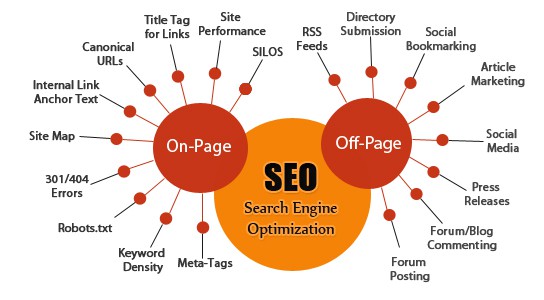Last updated on November 24th, 2022
Consumers today have a strong appetite for good content, and anything that fails to match up to their standards is deemed to be indigestible by them. They want content that empowers them in taking the right decision, content that satiates their curiosity and content that is JUST RIGHT.
Therefore brands worldwide work hard on creating a strategic marketing approach that’s focused on creating and distributing relevant, valuable and consistent content. The motive behind this is pretty simple, to attract and retain their target audience and to prod them into taking an action .
So, a good content strategy not only drives profitable consumer action but it also gives an opportunity to brands to become the best in the eyes of their users.
A recent survey by Zazzle media reported that 79% of marketing professionals that were quizzed felt that marketing is either very or quite effective.
Despite, content marketing’s star quality, there are innumerable content marketing challenges that content marketers face to get their content strategies right.
So let us talk about some of the biggest challenges in content marketing.
1. Content Marketing ROI
Demonstrating the true value of content marketing efforts has been a pain point for many of you marketers. With so many parameters to judge and measure, it becomes increasingly difficult to measure the ROI on content marketing. You might feel elated when some of your content pieces really do well, but that is not the sole criteria for measuring your ROI.
For ROI, you need to steer away from metrics like page-views, blog comments, page-likes or social shares and move on to a bigger picture to measure your efforts correctly.
Because if your content strategy, on the whole, is unable to make your brand meet its marketing objective, then it is a fail.
Don’t worry just as yet. Because we have here certain indicators that will give you a true value of your efforts rather than just a superficial picture.
Here they are:
- Lead Conversion
You should be confident about the leads that you generate via the content that you produce. This is what truly projects the ROI over your content efforts. In short, this provides a true value to your business - Lead Retention
Is your content good enough to retain leads? If not, then you need to start working harder on creating content that leaves a long-lasting impact. - CTA’s
These are visible indicators of how well your content works. Any inactivity here means that there is a change in content strategy that you must bring about. - Cost per acquisition/lead
If there is an increase in cost-per-lead or acquisition, then your content efforts need to be relooked at. This is the most fundamental and rock-solid parameter that can enable you to make better decisions. - Duration of the sales cycle
It’s pretty simple. Shorter sales cycle mean better content marketing and vice-versa. If your content marketing efforts take longer to convert the lead into a customer, then it’s time to reinvent them.
2. Monitoring the performance of your content
Measuring the ROI efforts will help you gauge how effective your efforts were with respect to the investment made. But, when we speak of performance, we talk about whole new content marketing challenges.
Therefore, to measure and analyze the performance of your content, you need to make a different set of metrics. Before hopping on to those metrics, here are a few suggestions that we think can help you in deciding the right course of action.
a) It is always advisable to not have too many metrics in place. Focus on less, and prioritize.
b) Build a strong reference point for your brand and set your sight on metrics that align with your marketing objective.
c) Have a clear idea of interpreting and measuring your results.
Some crucial metrics that you can track:
- Engagement time
While most of you would want to keep an eagle eye on page views, it is equally important to focus on the time that your users spend on your content. A tool like chartbeat can be of great help.
Here is a quick demo of the same.
Another tool called hotjar also helps in recording the time that each user has spent on your website. A quick video here would give you a better idea.
- Sources and Devices
Knowing where your customers come from can help you craft a content strategy that gives you better results . For example, your targetted audience uses Twitter and Facebook and you push same content on both. But, while doing that you realize that the content pieces on twitter are doing phenomenal,and the open rates on mobile are higher as compared to desktop. This helps you in maximizing your efforts in the right direction.
Google analytics and Kissmetrics are some of the tools that can greatly assist you in doing this. An image below will give you better clarity.
- Shares and mentions
This is an important metric as it tells you the impact of your content on users. If your content is shared by your users, then you know that your content strategy is quite right. So, by analyzing this you can figure out the frequency and the medium where your content is shared. With that knowledge, you can channelize your efforts in the right direction.
Tools such as Mention & Simply Measured are great for evaluating the social media activity around your brand’s content. - New Versus Returning Users
You must chalk these metrics out in sheer detail. While, a new customer is a boon to your brand, a returning or a loyal customer is a living testimonial.
So you should give careful attention to indicators such as how many days/months later has a customer visited your site, how often they purchase a product from you, the kind of products that they buy the most etc.
Tracking these parameters will make you deep-dive and create content that is tailored and will definitely sustain that loyalty.
Here is a blog by us that will help you in differentiating between your new users and returning users.
3. Competition with paid promotion
Agreed, that you produce great content, but sometimes it is not enough. The content landscape is shifting gradually towards the realm of paid promotion. The reason is simple, social media giants are leaving no stone unturned in empowering marketers. They are offering increasing ways of segmenting your audiences, thus giving you full power to know your audience.
On the other hand, advertising does not build trust. It creates awareness. It does not form a personal bond, it promotes your brand.
So, what’s the solution?
Content marketing or Content Advertising?
The solution is to be tactful, identify the need of the hour and content marketing challenges and strike a wise balance. If you want to position your brand as the “best in the industry”, then you cannot really afford to just place your bet on one channel. You need to embrace the best of both worlds.
To figure out how to combine an effective content marketing and advertising strategy for your brand, you need to focus on the following
- Your goal/objective
- Your Budget
- Target market
- Content Type
- Your audience’s Social media behaviour/consumption pattern
- Device compatibility of content
- Desired outcomes
So a combination where you can reach out to your audiences faster in shorter time spans(through paid advertising), and at the same time engage customers in the long run(through content marketing) is an ideal.
4. Unrealistic Expectations
Now, these expectations can be from two sources.
From your team
From yourself
So, Let’s talk about them one by one.
- Case 1
Presenting the business case for content marketing in front of your managerial team can be a daunting task as it comes with a set of challenges. Most of the managers and executives expect a “quick” return on their investment from content marketing.
You need to make all the stakeholders understand, that content marketing is unlike traditional marketing strategies that show an immediate result. Content marketing is a gradual process, but it has long-term benefits that sustain. Success through it does not come overnight, and it takes time to build trust and credibility.
A snapshot of Wordstream’s traffic over a period of 6 years shows how long it actually takes for the content marketing efforts to show results.
It took 2.5 years for the traffic to grow considerably and it was 4 years later when they saw a major traffic boom. It takes time, but it is worth it.
- Case 2
You need to set REAL expectations for yourself as well. Focus on achievable traffic and engagement, rather than aiming too high too fast. Don’t deem your content strategy as a failure if you don’t get “your” desired results.
Therefore, through this, we understand that a good content strategy is fruitful but requires patience, constant effort and a strong strategy.
To get steady results you need to do the following:-
- Publish consistently
Have a schedule in place, and editorial calendar that helps you decide and map things correctly. And consistency does not mean bombarding content everywhere, there needs to be a strategic approach to what content goes on which platform. Our blog on how to make your editorial calendar will surely help you create a structured schedule. - Produce relevant & variety of content
Make sure that the content you produce is worth your users’ read. If it does not match with your users’ frequency then it is a complete waste of time, effort and money. You need to create content that grabs the attention of your audience and leaves them wanting for more. You need to create content that connects with them on an emotional level. It should be informative, unique and downright impactful. - Writing for a niche industry
Writing for a niche industry with a very small target audience might seem like a nerve-wracking task. Apart from catering to a smaller sector of an audience, other challenges include positioning yourself as a go-to brand for your service/product or you establishing yourself as a leader in that specific field.
So, these challenges might look daunting, but there are ways to combat them.
You can read about them below.
1. Seek and use expert sources
Your audience will already be aware of your arena of service or product. So, producing content that’s basic and entry level will be deemed as invaluable to your audience. it is advisable to base your content on expert sources. You can do this by referring to industry blogs, or by interviewing experts. This would result in high-level, relevant & informative content that will add value to your brand and establish your brand’s authority.
2. Keep an eye on the latest trends
Staying up-to-date with the latest news concerning your industry is a great way to stay on top of your game. Discussing trends through your content on various platforms is a winning strategy for your niche brand.
3. Create content in a format that would be consumed the most
For example, if you are a finance company that gives out small-sized loans to salaried employees, then you can craft content in different formats for users in different stages of their purchase cycle. if your user has just become aware of your business, then you can establish your brand’s identity by giving white papers or e-books that talk about the various facets of your business. Finance is a tricky game, and for users to believe in what you do, you need to give them that assurance.
You can check out one of our articles on content marketing for Fintech.
4. Create content that educates people
It is very important to have content that educates people about the problem that you are solving. By educating them, you are also establishing your identity as a thought leader, thus differentiating yourself from your competitors.
We have here a list of a few experts from our industry with their opinions on the content marketing challenges that they face.
- Creating unique content that offers value to its readers
One approach most content marketers take to create content is spinning the already existing content. This, having been repeated over and again has resulted in throwing out the same information with zero or very little varying value addition to the readers. A simple way to overcome this is to rely on sources other than the internet to create content. A few may include reading books, talking to veterans etc. This gives the content marketer an edge that the others don’t have thus enabling them to roll out content that is both, unique and valuable. - No direct or immediate impact on sales due to which content marketing is usually undervalued.
This is still a very prominent challenge that prevails in the ecosystem. While it is true that the effects of content marketing are realised over time and cannot be reflected immediately, it is also possible to measure some aspects immediately. This could be the time spent on the article, SERP, Engagement received views etc. Besides, one can also cater to specific business objectives by vigilantly drafting the sales funnel and catering to the need in hand. Setting benchmarks and continually overgrowing these would give any content marketer the power to deduce the importance and impact of content marketing thus providing scope to void the challenge.
- Internal Challenges
Convincing people higher up in the organization to be on the same page as you regarding Content strategy was a struggle. People expect Content Marketing to bring instant revenues for the business and want you to align your outlook similarly. This led to differences in opinion regarding the actual content topics: 1 team wanted more of sales oriented content that extolled the virtues of the brand directly, and the Marketing team wanted to build a knowledge base via thought leadership content. We overcame this by maintaining a balance between the two areas. You can’t solely be focussed only on one area and hope to create an effective content strategy. It is important to be perceived as an industry expert to build trust in the industry, and this can be leveraged by creating content that is linked closely to lead generation. - External Challenges
How to create content that performs? This is an active problem that every content marketer faces. We were struggling to create highly engaging content that was going to drive traffic to our website. To tackle this, we invested time in understanding our Target Audience. It was important to create a reader profile, and understand their problems so that we could create better quality content that is considered valuable. Keyword Research, Competitor Analysis, and regular Feedback from the blog readers are crucial to understanding what works in the industry, and what it is that you should be writing about.
- There is a lack of research
Most content is generated without proper study and research about the theme and topic and ends up seeming like an attempt to meet the word limits with generic information. The solution is well-researched and in-depth content that actually provides value to the users. - No clear objectives or metrics are set to measure the impact.
It is important to know how well or badly your content has performed. Without a measurement or an evaluation, your content strategy is a fail. - Vehement inconsistency amongst cross-channels
Brands present on multiple platforms do not follow consistent tonality. You can easily notice brands having a ludicrous conversation on Twitter, or other social media platforms while their website puts across a stiff demeanour. Therefore it is crucial for a brand to have the same voice, brand language and tonality for the audiences to identify them. - Overselling
Overselling when companies have a massive reach seems almost irresistible, but they have plenty of other things they could be talking to their audience that is engaging and useful. - Vague/ terrible headlines
Headlines should avoid being click-baitish, it must stand on its own and make sense when the rest of the content is available only by clicking.
Final Word
Content marketing challenges are growing, perhaps much more than it was earlier. But then, you need to think of ways to overcome the challenges and stick to your strategy Generate leads using content marketing . Use content strategy convert visitors to customers. The key is patience. Content marketing continues to be one of the most effective methods to expand your business and get you an increased return on investment.













